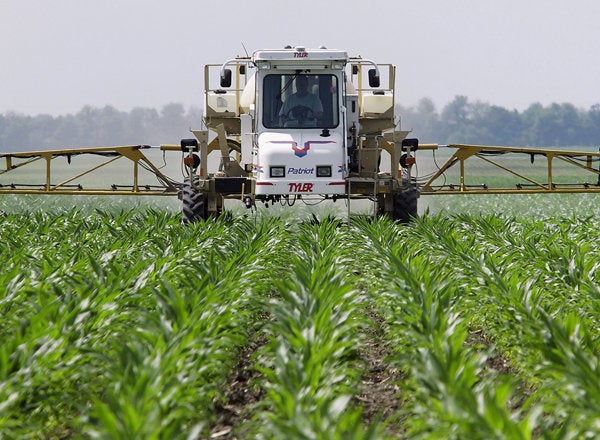
The Great Plains grassland occupies an astoundingly vast area of central North America, encompassing 14 percent of Canada and the United States. It is one of the most remarkable and timeless ecosystems on the planet.
To comprehend the arid prairie of today, we must delve back into time examining the antiquitous bedrock from 3.6 billion years ago. The layers above this bedrock tell the story of the last 550 million years of earth's history. They clearly show the floors to the many different
seas and its life forms, to tens of millions of years of mountain building and millions of years of wind and water erosion, glaciations and, finally, deglaciation.
Scientists have documented rich fossils in sandstones and shale now buried two miles beneath the canola fields of the grasslands. The beautiful tyndal stone of Manitoba, used as a hallmark of prairie buildings, represents ancient Silurian coral reefs from 440 million years ago. When that sea evaporated, intense concentrations of salts precipitated out the salty waters leaving thick beds of potash and other salts in Saskatchewan and Montana. Other seas and sea-life left the legacy of vast oils fields for Alberta.
Frenchman's Valley in Grasslands National Park reveals extensive prehistoric details of the fearsome Tyrannosaurus-rex like its half-a-gallon sample of intact dung with the undigested head of its Triceratops prey.
About three million years ago the Earth cooled and entered a permanent winter that lasted up to about 15,000 years ago. Slabs of ice two miles thick bulldozed the prairies. And then came the extraordinary glacial melt, equivalent to all the ice on present-day Antarctica melting at once.
Soon after the melt unusual looking Ice Age mega-mammals like woolly mammoths, mastodons, saber-toothed lions, and bison roamed the prairies. By 11,000 years ago there were chipped fragments of stone and bone as humans hunted mammoths, mastodons and bison.
Ten thousand years ago mean global temperatures rose abruptly and have stayed that way ever since. Woodland vegetation, in the form of clumps of trees, shifted dramatically in response to warmer and drier conditions. The Ice Age mega-mammals abruptly died, bison became dominant and about 140 different kinds of drought tolerant grasses moved in.
The story of the prairies revolves around the climate. Its plants, animals -- including its people -- are some of the hardiest in the world. The prairies are a land of extremes: either inundated by saline or glacial melt waters, or the land that is as dry as a bone.
Grasses have figured out how to contend with aridity. They invest as much as 80 percent of their growth into roots and are able to regenerate by cloning from vegetative structures. They are well adapted to seasonal grazing and the frequent occurrences of lightning induced surface fires.
The soils of the Great Plains Grasslands are legendary for their fertility. Trillions upon trillions of soil algae, fungi, bacteria and protozoa create what may be the greatest diversity of living organism on Earth, and in turn, the soil of the prairies.
Microscopic water bears called tardigrades waddle through the film around soil granules, and drill into roots with sharp snouts, sucking out nourishment.
The soils are fertile because the grasses produce more below-ground vegetation than soil organisms can consume. The excess nutrients are stored in a layer called humus, which very slowly releases nutrients back into plant roots. Moreover, four different species of dung
beetles process huge amounts of organic matter, enhancing the soil fertility, and providing their offspring with food, water and shelter; a rare example of adult insects caring for their offspring.
The assemblage of over 2,000 native species of plants and animals on the Great Grasslands outdoes that of the subtropical Florida Everglades. The wonderful tangled web of interconnections on the grasslands is breathtaking. For example, the black-tailed prairie dog or beaver of the grasslands creates living space for scarlet mallow and prickly pear cactus, also making food and shelter for insects, birds, mice, rabbits, hares, and the endangered burrowing owls reoccupy old prairie dog burrows. In addition, 160 species of vertebrates, two species of rattle snakes, hawks, weasels, skunks, badgers, bobcats, coyotes, foxes and the endangered black-footed ferret prey on prairie dogs.
The prairies are truly unique because of the ephemeral aquatic potholes and the exquisite pockets of animal and plant diversity that surround them. The aquatic life forms have all adapted to drying up. Cattails and bulrush seeds can live in a dormant state for over 30-years awaiting rainfall to germinate and refill potholes. The Great Plains and Great Plains spade toads have spurs or spades on their hind legs and as a drought sets in they excavate like augers into the soil, reducing their metabolism for months, or even years, until rain
finally occurs!
Over the past 100 years our prairies have fed the world; yet inadvertently we have destroyed crucial natural habitat. Only about one percent of the Great Plains grasslands are currently protected. There is, however, hope. The Herculean efforts of the Nature Conservancy to protect the grasslands by spearheading the Old Man on his Back Conservation Area and supporting ongoing work in Grasslands National Park are making headway.
Native solitary and bumble bee populations are plummeting as global warming affects the timing, or phenology, of plants flowering, which is now occurring about 2.3 days earlier in the season. Massive over-use of synthetic herbicides, pesticides, miticides and fungicides are having a deleterious effect on our native bees and on the honey bees.
The key to our future is to protect the diversity of swimming, flying, walking, crawling and wriggling forms of life on the wild prairies.
This story is dedicated to my late friend, mentor and master photographer Courtney Milne.
Dr. Reese Halter is a Science Communicator: Voice for Ecology, conservation biologist at California Lutheran University and public speaker. His latest book is The Incomparable Honeybee, Rocky Mountain Books. Contact him through www.Dr Reese.com.
